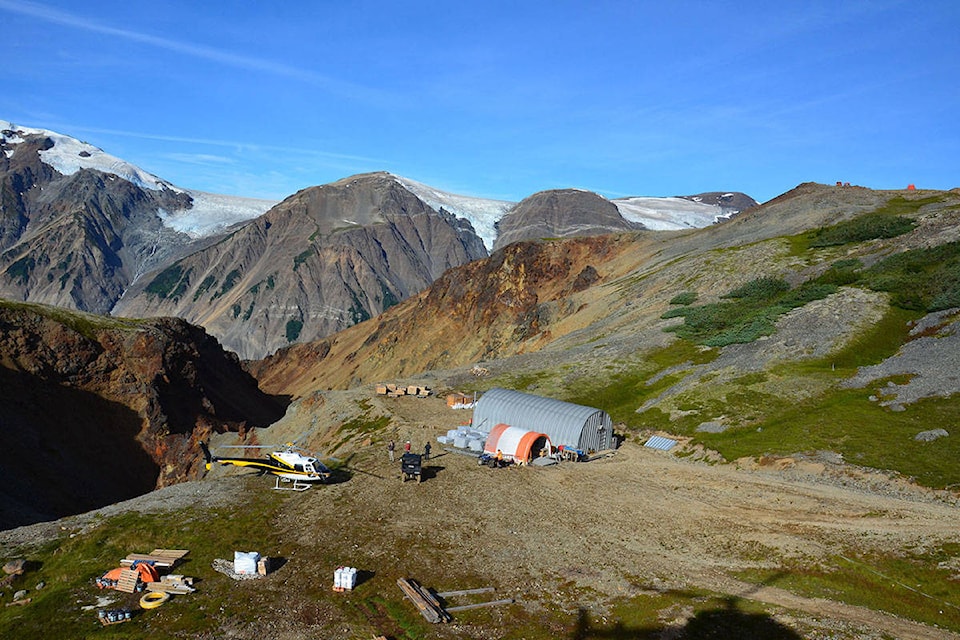A pilot project involving the provincial government, Indigenous groups and the mining industry may be a model for a much broader coalition.
Last year, British Columbia, the Tahltan Central Government, the Nisga’a Lisims Government, the Association for Mineral Exploration (AME), Skeena Resources, IDM Mining, GT Gold, and Dolly Varden Silver formed the B.C. Regional Mining Alliance (BCRMA) “to promote British Columbia’s mining opportunities internationally” according to a Ministry of Environment, Mines and Petroleum Resources press release.
The group represents exploration and mining interests in northwest B.C. in an area dubbed “the Golden Triangle” that straddles Tahltan and Nisga’s territories and includes the Port of Stewart and a dozen active mining operations.
Rob Stevens, AME vice president of regulatory and technical policy, said the impetus for forming the alliance was, in part at least, to combat negative perceptions about B.C. in the international investment community.
READ MORE: Northwestern B.C. mining activity grows
“Some of that’s a feeling that it’s difficult to get projects underway, whether that’s environmental reasons, government reasons, government-First Nations, those are some of the perceptions out there and I think those are perceptions that aren’t really the reality of what it is like to work in B.C.,” he explained. “The regional Mining Alliance is really an opportunity to showcase partnerships and collective relationships that include the provincial government, First Nations and industry and share our success stories.”
Stevens believes some of the negative stereotypes come from international attention on pipeline conflicts in the province and Canada in general.
“Although that is very different from mineral exploration and mining, people hear that and hear challenges with First Nations or government that isn’t necessarily as supportive of [pipelines], and they can take a broader brush that that reflects resource development more broadly,” he said.
“That perception is something that can get established and then gets rooted and it’s hard to shift, so I think this kind of common front that we’re going forward with is really a good opportunity to help shift that perception.”
The Province appears to be of the same mind. At AME’s annual Mineral Exploration Roundup, Premier John Horgan announced an additional $1 million in funding for BCRMA.
Horgan also announced that his government is making permanent two incentives that were previously only renewed on an annual basis.
Both the mining flow-through share and the B.C. mining exploration tax credits are now something the industry will be able to count on.
“People often think of mining — certainly in my community on the Island — they think of mining as a rural undertaking,” Horgan said in opening remarks at Roundup. “Mining is as important to urban British Columbia as it is to rural British Columbia.”
READ MORE: Tahltan, Tlingit, Kaska youth participate in Vancouver mining conference
Chad Day, president of the Tahltan Central Government, said the industry has been good for his people and sees the BCRMA as an opportunity for future growth.
“The Tahltan Nation has been benefitting from mining for over a century and at this point we have about 300 people employed from year to year if you take into consideration the active mining operations in our territory and combine that with the seasonal opportunities offered through the mineral exploration industry,” he said.
But the BCRMA has also had an important impact in strengthening First Nation to First Nation relationships.
“They approached us and given the good relationship we already had with industry and B.C., it seemed like something we were willing to try out, but a large reason why we were excited to join it was to strengthen our bonds with the Nisga’a who are the southern neighbours to the Tahltan,” Day said.
“For the first time ever Nisga’a have invited us to their Hobiyee (new year) celebration and we’re going to be sending a huge delegate of Tahltan leaders, elders, youth and just people over to Gingolx (Nisga’a capital) on Feb. 22. That would not be happening if we had not done this work together on the BC Regional Mining Alliance.”
Stevens sees the project as stepping stone to further collaboration.
“The northwest was a really good area to pilot it in given there’s so much activity there and that the Tahltan and the Nisga’a are good partners in the exploration working with the companies, but I think it is meant to put a B.C.-wide face forward not just be specific to one particular region,” he said.
“There needs to be discussions among all the groups involved, but my expectation is that it will expand beyond the Golden Triangle where it’s focussed right now to probably other regions of the province, probably other First Nations, and additional companies.”
